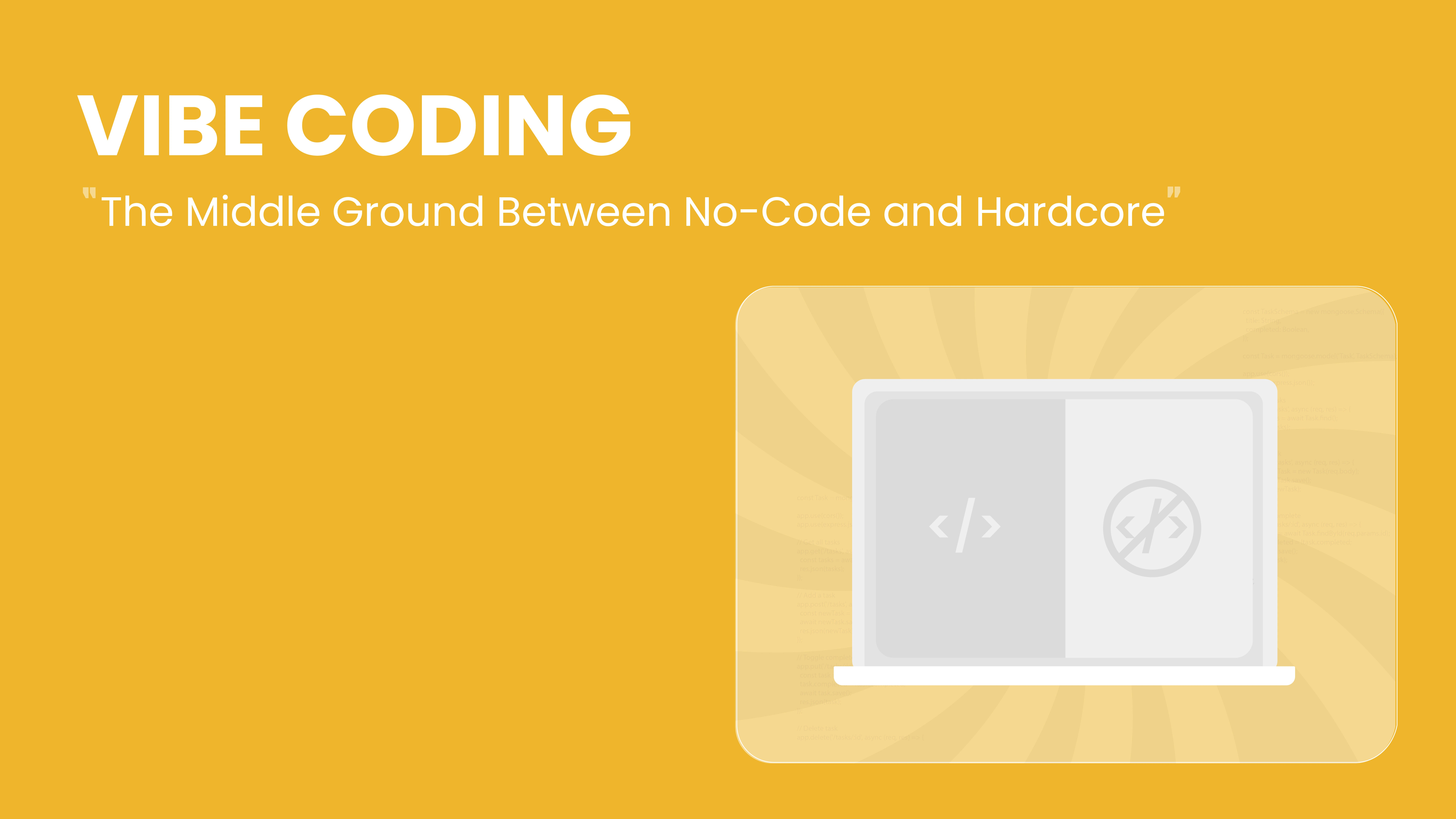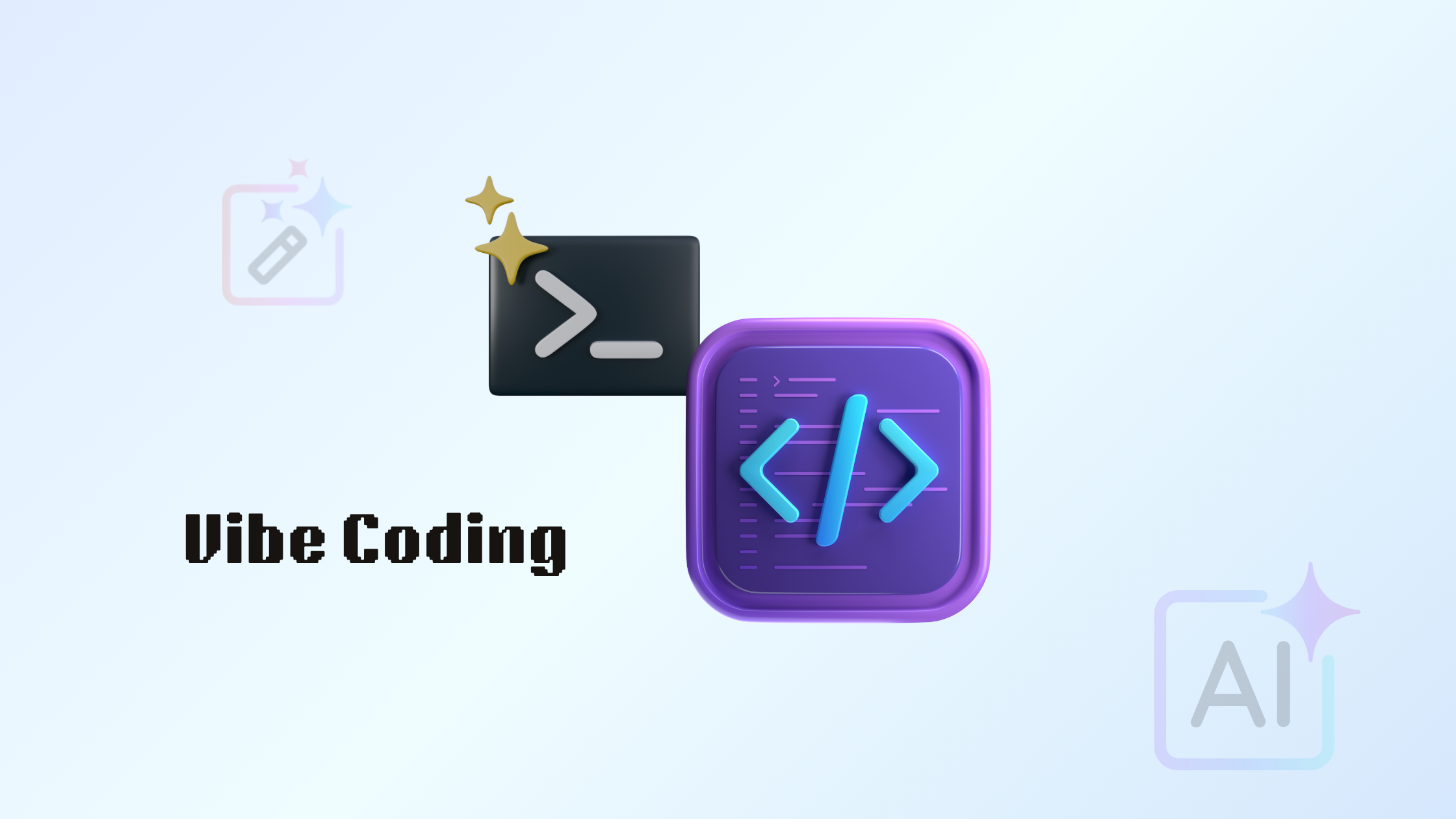

What if you could build full-featured applications without writing every line of code, but also without relying on drag-and-drop no-code tools?
Welcome to vibe coding, a rising development approach that sits right between the extremes of hardcore engineering and no-code platforms. It’s not about skipping logic or ignoring structure , and it’s definitely not about giving control to a black box. Instead, vibe coding leverages AI-assisted development to transform natural language prompts into working code. Developers focus more on the intent, while tools like ChatGPT, GitHub Copilot, or custom LLMs handle the scaffolding.
In today’s fast-paced dev landscape, where agility often collides with complexity, vibe coding offers a middle path, one that values speed, collaboration, and clear intent without sacrificing flexibility or long-term maintainability.
In this blog, we’ll explore:
To understand where vibe coding comes from, we have to look at two parallel developments in software:
Over the last decade, web and app development evolved into a sophisticated maze of backend services, frontend frameworks, CI/CD pipelines, queue systems, APIs, cloud functions, and more. This complexity raised the bar for even the simplest features.
At the same time, tools like Webflow, Bubble, and Airtable began making app creation more accessible to non-engineers. But as empowering as they were, no-code tools had limitations: rigidity, lack of customization, and inability to handle complex business logic or scaling.
The missing piece? A system where developers could stay in control, but work at the speed and abstraction of no-code. That gap is what vibe coding aims to fill, not by removing code, but by transforming how it’s written.
The real turning point came with the rise of AI-assisted development.
When GitHub Copilot launched in 2021, it showed developers what AI could do with just a few words of context. But that was just autocomplete on steroids.
With the advent of large language models (LLMs) like ChatGPT, the experience became conversational. Developers could now describe entire components, refactor code, debug in plain English, and even scaffold projects, all through prompts.
This ushered in a new development loop:
In essence, the IDE became a dialogue, not just an editor. This shift transformed AI from a helper to a true development partner, one that thrives on clarity of intent, not keystrokes.
Today, vibe coding is expanding beyond playgrounds and side projects. Tools like Cursor, Codeium, and Replit’s Ghostwriter are integrating deeply into dev environments. Meanwhile, frameworks and libraries are being designed with AI-compatibility in mind, making prompting smoother and more effective.

In today’s software landscape, developers face a dual challenge: rising complexity and rising pressure to move fast. Every new framework, cloud service, or third-party API promises efficiency, yet often adds cognitive load and friction. The result? Developers spend more time stitching pieces together than solving core product problems.
At the same time, business teams expect faster iterations, quicker MVPs, and flexible experimentation. The pressure to “ship fast and scale later” has never been higher. But doing so while maintaining quality, clarity, and control isn’t easy, especially for smaller teams or solo devs.
On the other end of the spectrum, no-code and low-code platforms have become popular for rapid prototyping and internal tools. However, they come with serious limitations:
This leaves a significant “middle ground” underserved, a space for builders who want the speed and abstraction of no-code, but the flexibility and depth of traditional coding.
That’s the gap vibe coding tries to fill.
By using natural language prompts to generate and refine code through conversational loops, vibe coding offers a new development model, one that preserves developer control while reducing repetitive work. It allows developers to focus on intent, architecture, and outcomes, rather than drowning in syntax or boilerplate.
At the heart of vibe coding lies a simple but powerful shift: instead of writing every line of code yourself, you describe what you want, and an AI assistant generates the initial implementation. It’s not about giving up control, it’s about working smarter and faster by turning natural language into working code.
This approach relies on large language models (LLMs), AI systems trained on massive amounts of code and documentation. These models can understand context, infer logic, and generate functional code across multiple languages and frameworks.
The goal of vibe coding isn’t to replace developers, it’s to augment them. It’s coding as a conversation: you describe the vibe (goal), the AI interprets it into code, and you refine or build on top of it.
Here’s how a typical vibe coding workflow looks in practice:
Unlike no-code platforms, you still own and understand the code, and can scale or customize it however you like.

Several tools are leading the charge in making vibe coding practical and powerful:
These tools combine natural language understanding with code-generation power, helping developers go from intent to implementation in record time, without sacrificing control.
Vibe coding is more than a cool concept, it's already reshaping how developers build, especially in fast-paced or resource-constrained environments. Here are some real-world scenarios where it's proving valuable:
The biggest impact of vibe coding is on developer velocity and creativity. By reducing the time spent on repetitive scaffolding or syntax-specific tasks, it frees developers to focus on architecture, design, and problem-solving.
It also levels the playing field, giving solo developers and small teams access to capabilities once reserved for larger teams with specialized roles.
However, this productivity boost must be balanced with caution: over-reliance on AI without code review or understanding can lead to technical debt or security issues. The best results come when developers use vibe coding as a collaborative partner, not a crutch.
While vibe coding offers speed and flexibility, it’s not without its challenges. As with any emerging approach, there are trade-offs developers must navigate.
Ultimately, the future of vibe coding lies in striking the right balance between speed and structure, autonomy and accountability.
Vibe coding is still in its early stages, but the momentum is clear. As language models become more capable and context-aware, we're moving toward true AI pair programming, where the assistant understands not just individual prompts, but the entire codebase, business logic, and project goals.
In the near future, vibe coding could become the default workflow for building prototypes, MVPs, and even production features, especially for startups and lean teams. Developers will act more like architects and curators, guiding AI through intent while focusing on higher-level design, logic, and system thinking.
Vibe coding represents a compelling shift in how we approach software development, blending the power of AI with human creativity and intent. It fills the gap between rigid no-code platforms and the demands of full-stack, hands-on development by allowing developers to work faster, smarter, and more collaboratively with machines.
Throughout this blog, we explored how vibe coding emerged, how it works, and where it's already proving valuable, from MVP development and internal tools to education and rapid prototyping. We also examined the limitations, including code quality concerns, context handling, and the risk of over-reliance on AI.
As the tools evolve, so will the role of developers , from code writers to AI-guided architects. Vibe coding isn’t the future of all development, but it’s becoming an essential part of the modern dev toolbox.

.svg)